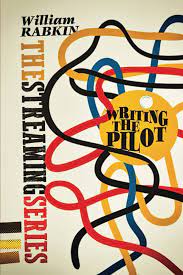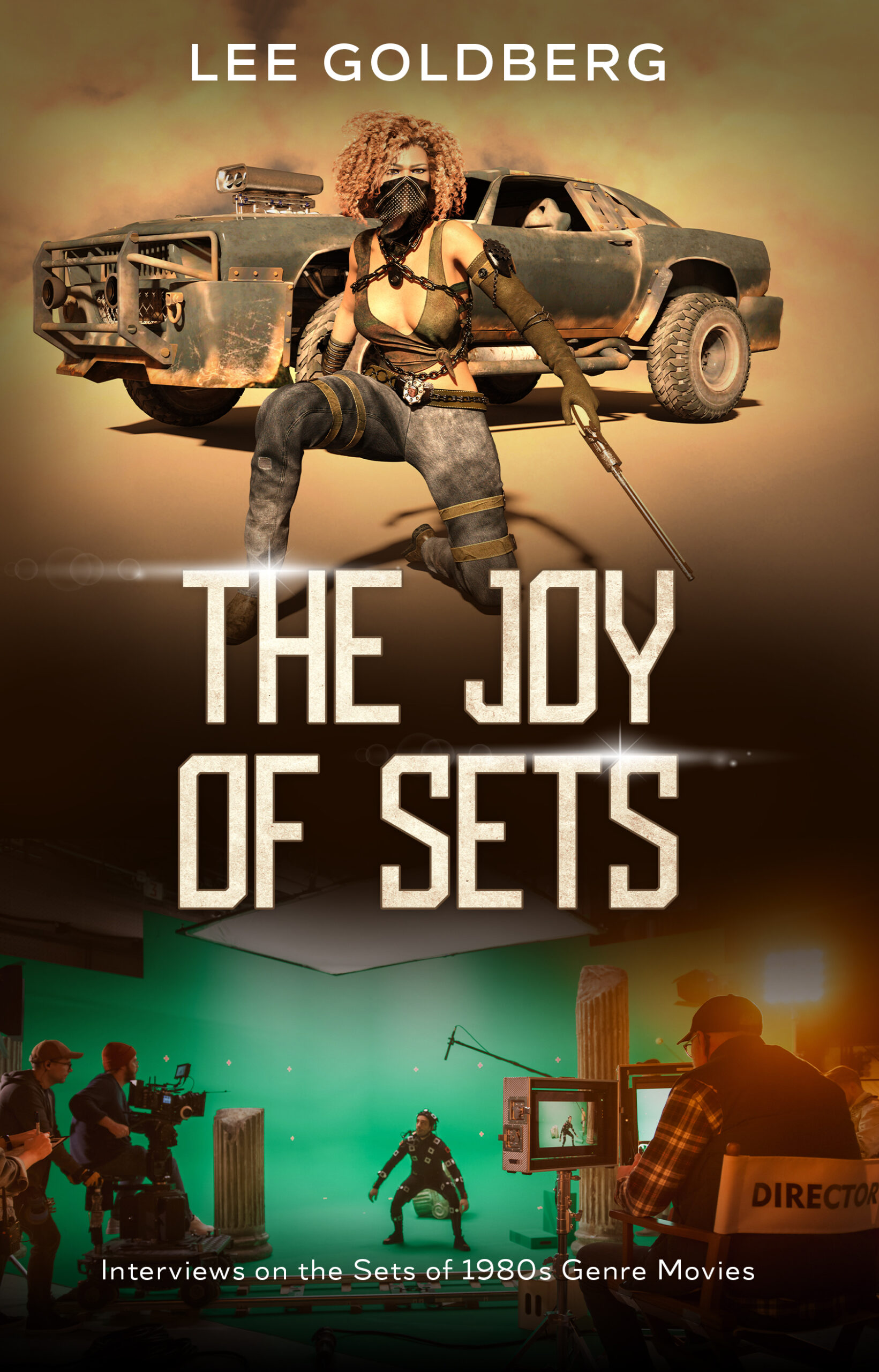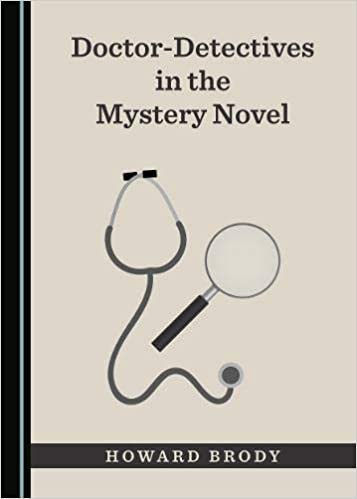Writing
Crown Vic
Crown Vic is a slim new volume from Cutting Edge Books containing two previously unpublished stories about Ray Boyd, an ex-con traveling the open road in an old cop car. Ray is the anti-Reacher. He doesn’t help people in trouble. He helps himself.
Fair warning, these two violent, sexually explicit stories — “Ray Boyd isn’t Stupid” and “Occasional Risk” — are very different from anything I’ve written before (with the possible exception of “Lost Shows,” a short story I wrote for Lawrence Block‘s Collectibles anthology). I shared the stories with Larry, my agent, my brother Tod & a few friends, who all really liked them. But I didn’t know what to do with the stories after that (who publishes short stories like these anymore?) and I had two books to write, so I set Ray aside. That was a few years ago.
Recently, my brother asked me to write a new Ray Boyd story for an anthology he’s editing…and once I got into it, I realized how much I missed the character.
But should I write more about Ray Boyd?
That will depend on you and the response I get to these two stories, which Cutting Edge Books is publishing as a test run. If you like them, let me know by posting a comment here or leaving a positive review on Amazon.
Dame Edna and Me
I’m sad to hear that Barry Humphries has passed away. One of the absolute highlights of my career was writing a DAME EDNA movie for him. It was initially developed for the A&E network and was meant to be the first in a series. What the network wanted was a mystery solved by Dame Edna. I got the gig because Barry had read my book Watch Me Die (then called The Man with the Iron-On Badge) and had really liked it. The opportunity was too good to pass up …and, incidentally, would also be the biggest payday I’d ever had as a screenwriter (and my first solo script without my then-writing partner Bill Rabkin).
But could I actually do it?
I watched just about everything Barry had ever done as Dame Edna, or at least everything I could get my hands on, and read all of his books, as well as John Lahr’s book about him. I was confident in my ability to write a mystery, and to be funny, but not anywhere near as funny as Dame Edna. The project scared me. How could I even try to be as funny as him? To capture his unique voice? It was insane. Moreover, so much of Dame Edna was also rooted in Australian culture, which I knew nothing about.
So when I met with Barry, in his suite at a Beverly Hills hotel, the first thing I told him was that I will never be as funny as you. If I’m lucky, I’ll get you a script that 40% of the way there joke-wise, and you’ll have to do a major pass to make it your own…to make it Dame Edna. But he shrugged that off. He had great faith in me — a lot more than I had in myself.
I worked on the outline with him and his good friend, producer Gary Hoffman, for the next several weeks. It was so much fun. I don’t think I’ve ever laughed so much developing a story. Then it came time to pitch the project to the head of A&E in person. The three of us went in. I was counting on Barry to do the pitch with me. We’d never actually talked about that — I’d assumed it was a given. Why else would Barry be coming? We needed his star power and his wit.
I started things off. When we got to the first scene where Dame Edna appears, I turned to him to take over… and he just looked at me with a smile. I didn’t know it then, but he wouldn’t do Dame Edna unless he was in the make-up and outfit. He could only talk about her in third-person…and he wouldn’t even do that.
I was on my own.
I ended up having to imitate Dame Edna in front of the man who’d created the legendary character. I was terrified and furious at the same time. It was like trying to imitate Robin Williams or Jonathan Winters in front of them. But I had no choice. I wanted to sell the project. So I pretended he wasn’t there and gave it my all. Everybody was laughing. I wasn’t sure if it was at me or with me.
It didn’t matter. The president of A&E loved the pitch and I got the greenlight to write the script. I left that meeting soaked in sweat, embarrssed and angry despite our success. But Barry couldn’t have been happier or more supportive. He told me I did great.
Barry was very easy to work with, which I honestly didn’t expect. Whenever I approached him with questions or ideas, he was always gregarious, friendly, open-minded. There were a couple of times that I called him when he happened to be preparing to go on stage as Dame Edna, or had just come off-stage. Whenever that happened, he talked to me in character, even if he was alone in his dressing room. That’s because once the wig, glasses, and outfit were on, he refused to break character (that was also why, he once told me, doing his guest role on ALLY McBEAL was incredibly exhausting for him — he was Dame Edna playing a role. So even when he was “off-camera” he was still “on-camera.” He never was able to relax. He couldn’t be himself until he got back to his hotel room and out of the make-up). Those calls with Dame Edna were hilarious, and a bit unsettling, but also very helpful. I could ask the character herself the questions I had about her. It also felt like I was getting a private Dame Edna performance… and, in essence, I was. My only regret is that I never recorded one of those calls.
Barry loved my script — and, to my shock and delight, he didn’t change a single word. So Gary turned it in to the network and we waited. The network president loved it, too. I was so excited. We all were. But then the president was unexpectedly pushed out and the new regime rethought their programming strategy…and a series of DAME EDNA movies didn’t fit in. They dropped the movie.
But Gary refused to let the project die. He was able to get the project going as a feature in the UK thanks to, if memory serves, a big tax rebate. But then, shortly before pre-production was about to begin, the rebate was pulled, the funding gap couldn’t be filled, and the project was over. I was heart-broken. There were times over the next few years when it seemed like it might come back, but it didn’t happen. The problem was that Dame Edna was big in Australia and the UK, but not big enough elsewhere to get the necessary money or presales internationally.
That was it. We all moved on.
Some years later, after my career as a novelist really took off, Gary self-published my script as an ebook on Amazon, perhaps to generate new interest in the movie. I honestly wasn’t too happy that he did that, especially because the cover was amateurish and the interior formatting was wonky, but I didn’t own the script or the character, so it was out of my hands. I never included the ebook in my bibliography nor shared its existence with anyone. The truth is, I haven’t looked at the script in at least 12 years…probably longer. But you can. The ebook version of the script is still available. I don’t know if the script holds up after all this time. You’ll have to tell me.
I lost touch with Barry after the project fizzled, but I’ve always cherished the memory of working with him, and not just for the laughter or the paycheck. The experience undoubtedly made me a better writer. Certainly a funnier one, and I’m sure whatever lessons I learned from him, a true master of comedy and character, are still shaping my work today.
Writing the Pilot: The Streaming Series
Writing the Pilot: The Streaming Series by William Rabkin
This is a terrific book, but I am biased. Bill is my oldest friend, and was my TV writing and producing partner for over twenty years.
The book’s introduction alone, both a revealing history lesson and a perceptive overview on the state of the television industry, is worth the purchase price. The explosion of streaming services has changed the business of television and, with it, the way series are conceptualized and written. It’s not enough to have a good idea, you must understand the underlying forces, both creative and financial, reshaping TV. Luckily, there’s William Rabkin to make sense of it all…and guide you through it. This is essential reading for anyone hoping to break into streaming television…or any television.
An acclaimed screenwriter, showrunner, development executive, international TV consultant, and beloved professor, absolutely nobody is better suited than Bill to guide you through the creative landscape of streaming television today, envision where it’s going tomorrow, and teach you how to shape your series ideas to succeed in this ever-changing business and dramatic medium.
With this book, Bill will be your own personal Yoda, teaching you how to master the Force of streaming television success. This book is an essential manual for creating streaming television series that can succeed, not only in the business as it exists today, but what it’s likely to become tomorrow.
The Joy of Sets
I recently released a slim little book called THE JOY OF SETS: Interviews on the Sets of 1980s Genre Movies.
Go back in time with me to the 1980s, when I was a young journalist and aspiring author, and visit the sets of movies like Back to the Future, A Nightmare on Elm Street, and A View To a Kill, where I interviewed Michael J. Fox, William Friedkin, Wes Craven, Chevy Chase, Robert Zemeckis, Roger Moore, and many others actors, directors, producers and screenwriters.
I put myself through college by writing freelance articles, primarily about movies, TV and publishing, for publications like Starlog, American Film, Cinefantastique, and the San Francisco Chronicle. I didn’t do it just to pay my tuition and support myself… I also saw it as a way to get a graduate school education in all aspects of the entertainment industry…learning lessons I’m still benefitting from today.
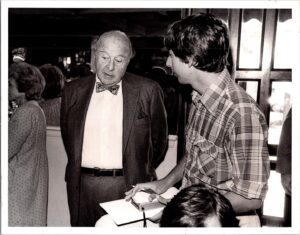
I’d go to the set of a movie and interview everyone — the actors, director, writers, special effects guys, production designers, etc. I’d write an overall “set piece,” with quotes from everybody, then longer interviews with each person that I’d sell sepately (though Starlog commissioned and published most of them).
The set pieces are a snapshot of film history, offering a revealing look at film-making in the 1980s, while also exploring the long careers of established talents like Kurt Russell and director Fred Schepsi at the top of their game…and introducing newcomers like Johnny Depp and director W.D. Richter, some of whom went on to greatness, and others who disappeared into obscurity.
I think this Bookgasm review really captures why I decided to publish this collection:
Lee Goldberg’s collection indeed captures the feeling of reading about hotly anticipated movies in the blockbuster excess of the ’80s. One can sense the then-young film obsessive had to have felt with such access to the making of multimillion-dollar pictures. While not all of these Interviews on the Sets of 1980s Genre Movies (as the subtitle has it) entail movies worth watching, Goldberg’s reports never fail to entertain. As with his recent James Bond Films volume, one reason is revisiting a once-dominant type of film journalism; the larger is the in-hindsight delight of checking how forecasts panned out.
I hope you enjoy it!
Book Review: DOCTOR-DETECTIVES IN THE MYSTERY NOVEL
DOCTOR-DETECTIVES IN THE MYSTERY NOVEL by Howard Brody (Cambridge Scholars Publishing, 2021) Let me get my bias out of the way. I was the executive producer & head writer of the TV series DIAGNOSIS MURDER, and have written for many other TV mystery series, so I have a natural interest in the subject matter of doctor-detectives. However, I also wrote eight original DIAGNOSIS MURDER novels, which are discussed in a chapter of this book. That has no impact on my review, but you will have to take me at my word on that.
My biggest criticism of the book is the outrageous, indefensible, $68 price for a 375 page hardcover, which makes it highly unlikely that this fantastic reference work will reach the wide audience of mystery readers and writers it deserves, and that is a shame.
My second major criticism is also a veiled compliment. Brody does indepth analyses of many medical mystery authors and their works (like Kathy Reichs, Patricia Cornwell, Colin Cotterill, and Aaron Elkins among many many others)…and, in doing so, spoils many terrific mysteries by revealing the solutions (which is inevitable, given that he is analyzing how medicine is used to solve the crimes, reveal character, and further the plot). If you are interested in a particular author, or their work, do NOT read any of the examinations of the books or the pleasure of reading them will be ruined. However, if you *have* read the books, then his indepth reviews are a splendid and revealing addition to your experience.
Whether you are interested in medical detectives or not, this book is an invaluable resource for mystery writers, particularly the first four chapters, a study of the basics of mystery plotting. Brody also discusses the various types of mysteries and methods of investigation, the various tropes and cliches, the art of misdirection, and the key differences between a mystery ending “that makes perfect sense” and one that you “couldn’t guess the solution.” In many ways, these chapters serve as a primer on what to do, or not do, in crafting your own mystery.
He notes from the get-go the close ties between detective work and everyday medicine, arguing that being a doctor, and diagnosing a patient’s ailment, requires all the same skills and methods as people solving crimes. He makes a case that R. Austin Freeman (1907-1942) was the first, and best, of the medical mystery authors. Freeman is unknown to me and, I suspect, most mystery readers, most likely because he was a raging anti-Semite and eugenics proponent, and those attitudes permeate his work.
To be honest, I was less interested in his in-depth — and that is a huge understatement — explorations of every single work by Freeman and other very obscure, early authors than his broader comments about the craft of mystery writing, plot structure, and investigative techniques. If this book were more affordable — and that is also a huge understatement — I would enthusiastically recommend it as a necessary, fascinating, scholarly volume for every serious mystery writer and reader. I wish I had this book before I started writing DIAGNOSIS MURDER…. 🙂
PS – That has to be one of the ugliest, and laziest, book covers in the history of publishing. It really feels like the publisher didn’t give a damn whether the book sold or not. Baffling.
Disney Must Pay
I am a member of the #DisneyMustPay Joint Task Force, a group of various writers’ organizations (SFWA, MWA, ITW, etc), that is demanding that authors, comic book & graphic novel creators get paid the royalties they’ve earned for their work from Disney & its companies. Here’s the full press release:
LOS ANGELES (August 12, 2021) – The #DisneyMustPay Joint Task Force is expanding its focus and reaching out to all comic book and graphic novel creators who may be missing royalty statements and payments from Disney and its companies.
“Writers, artists, illustrators, letterers, and other artists are valued members of the creative teams that produce art and literature that is enjoyed by millions,” said Mary Robinette Kowal, Task Force Chair. “We are inviting these talented artists to share their stories and we will fight for them to receive the money that is owed to them.”
All potentially affected writers and artists should contact the Task Force to share their stories. Creators who are missing royalties or royalty statements may fill out this form hosted by SFWA. Anonymity is guaranteed.
Lee Goldberg, Task Force member and founder of the International Association of Media Tie-In Writers (IAMTW), adds his thoughts about the need for the #DisneyMustPay Task Force to expand its reach to all creators: “Novelists and illustrators provide a rich, all-encompassing story-telling experience, their words creating fully flesh-out characters and detailed images, if not entire worlds and universes, in the readers’ minds. The authors and artists honored their obligation to write and create their books. Now Disney should have the decency and integrity to honor their obligation to pay them. It’s that simple.”
Sandra Wong, National President of Sisters in Crime, states, “Sisters in Crime believes that writers and creators should be paid what they’re legally owed for their work, no matter the media or genre. We joined the Task Force to help spread the word to potentially affected authors, since Disney has placed the onus to be paid on writers and creators, and to lend our voice to an issue which has potential consequences for all creators.”
The Task Force’s goals are to ensure that all writers and creators who are owed royalties and/or statements for their media-tie in work are identified and that Disney and other companies honor their contractual obligations to those writers and creators after acquiring the companies that originally hired them.
Fans, fellow writers, and the creative community need to continue to post on social media showing their support so the #DisneyMustPay Joint Task Force can help writers. Thanks to their support, the message is reaching Disney and related organizations, to alert them to the work they need to do to honor their contractual obligations.
Progress has been made, most notably ensuring that three well-known media tie-in authors have been paid and attaining the cooperation of BOOM! Studios in identifying affected authors. However, more than a dozen additional authors are still in negotiations with Disney. Many of them, especially ones with lesser-known names, find communications with Disney repeatedly stalled until pressure is again applied by the Task Force and its supporters.
The #DisneyMustPay Joint Task Force, formed by SFWA, includes the Authors Guild, Horror Writers Association, International Association of Media Tie-In Writers (IAMTW), International Thriller Writers, Mystery Writers of America, National Writers Union, Novelists, Inc., Romance Writers of America, and Sisters in Crime (SinC). Individual writers on the Task Force include Neil Gaiman, Lee Goldberg, Mary Robinette Kowal, Chuck Wendig, and Tess Garritsen. The Task Force identifies and guides authors and creators who might be owed money. Disney is refusing to cooperate with the task force to identify affected authors.
The #DisneyMustPay Joint Task Force is working to make sure creators’ contracts are honored, but individual negotiations are rightly between the creators, their agents, and the rights holder. The Disney Task Force is working to address structural and systemic concerns.
Additional updates and information are available at www.writersmustbepaid.org.
Work-For-Hire Conundrum
According to multiple sources, when a writer or artist’s work features prominently in a Marvel film, the company’s practice is to send the creator an invitation to the premiere and a cheque for $5,000 (£3,600). Three different sources confirmed this amount to the Guardian. There’s no obligation to attend the premiere, or to use the $5,000 for travel or accommodation; sources described it as a tacit acknowledgment that compensation was due.
Marvel declined to comment on this, citing privacy concerns. “We can’t speak to our individual agreements or contracts with talent,” said a spokesman.
Several sources who have worked with Marvel say that remuneration for contributing to a franchise that hits it big varies between the $5,000 payment, nothing, or – very rarely – a “special character contract”, which allows a select few creators to claim renumeration when their characters or stories are used. There are other potential ways to earn more – many former writers and artists are made executives and producers on Marvel’s myriad movies, cartoons and streaming series, for example – but those deals depend on factors other than legal obligation.
“I’ve been offered a [special character contract] that was really, really terrible, but it was that or nothing,” says one Marvel creator, who asked not to be named. “And then instead of honouring it, they send a thank you note and are like, ‘Here’s some money we don’t owe you!’ and it’s five grand. And you’re like, ‘The movie made a billion dollars.’”
The way Marvel writers & artists are being treated may be “contractually legal,” but it is still despicable.
I’m very, very lucky. I have been treated fairly in my work-for-hire deals, which include my Monk and Diagnosis Murder novels. Those were great experiences. But I was in a unique position in both cases.
On Diagnosis Murder, I was the executive producer/showrunner on the TV series for several years (all with William Rabkin). The publisher and studio came to me to write the books… and that gave me leverage. Creatively, I certainly wasn’t going to let them tell me how to write books based on a TV series that I exec-produced. And, to their credit, they never dared 🙂 I had complete creative freedom.
On Monk, I was already a writer on the TV show and good friends with Andy Breckman, the creator/showrunner. He gave me free reign to do as I pleased creatively and he personally made sure I was treated fairly on every level (and two of my books were adapted into episodes). I wish I was paid a lot more, but otherwise, I look back on those 15 books with nothing but fondness.
The big pitfall with work-for-hire book deals is that you don’t own any aspect of your work. It’s the equivalent of building an addition on someone else’s home. In most work-for-hire deals, you are paid a one-time flat fee, a buy-out of all rights and royalties. Some work-for-hire deals, like mine, included a share of royalties and can also include a share of some future rights, like a movie or TV adaptation, but that’s very rare and few authors have the leverage to demand it…and get it.
The common work-for-hire, total buyout deal is easier to stomach when you are working within a hugely successful intellectual property you didn’t create… and it can bring your work (and your name) to a wider audience than you could ever hope to reach on your own, especially early in your career. It can be a big boost in visibility (reviews, bestseller lists etc) that’s worth the often very low pay, draconian deadlines, and rigid creative restrictions.
But a work-for-hire deal becomes thornier when you create new characters and storylines that lead to other works in the “universe” you are working it. Take, for example, the freelance TV writer who wrote the “Space Seed” episode of the original Star Trek series. Decades later, the character he created became the basis for Star Trek II: The Wrath of Khan. My guess is that he got paid a pittance, if anything, and no credit. The Writers Guild of America has since dramatically increased protections (and compensation and credit) for writers in that situation, but authors don’t have a union in their corner or anything close to the same protections. They have an agent, or a lawyer, and they can consult with the Authors Guild (which has no teeth and is not a union), but they are still likely to get screwed over. The $10,000 you got paid to write a work-for-hire book seems like a win at the time…but it becomes an insult if the novel is later adapted into a movie or TV series or TV series episode…and you not only don’t paid anything more, you don’t even get a credit for your work.
Work-for-hire contracts in the publishing world are routinely slanted against the writer on every level. That needs to change. But will it? I doubt it.
The Mail I Get: Rejection Edition
 How to never sell your book…
How to never sell your book…
We received a submission at Brash Books, the small publishing company I co-founded six years ago with Joel Goldman. After reading the submission, we decided to pass. This is the entirety of the rejection letter we wrote to the author:
Thank you for thinking of Brash for XYZ. Unfortunately, it’s not a fit for us. We wish you the very best finding the right home for the book.
His reply:
Keep printing The same redundant shit Arrogant ass, just remember the title of this book, u will see it on the best sellers list asshole.
And I’m sure he wonders why he hasn’t sold a book yet. (BTW, his submission was awful). So I decided to respond:
I sincerely doubt it… and I say that as a novelist who has actually been at the top of the New York Times, USA Today, Wall Street Journal, and Washington Post bestseller lists multiple times. To be a successful author, you not only need to write well, and tell a good story… you also need to have some decent people skills. If I lashed out and called every publisher who politely rejected my work an arrogant asshole, I wouldn’t have achieved my success. How do I know? Because I ultimately ended being published by two of the publishers who’d rejected my previous work. You are clearly the biggest obstacle to your success. You might want to rethink your strategy.
He responded a short time later.
This book has a very complex plot and vivid characterization that you couldn’t have possibly ascertain in the brief time you review my story. is a very complex plot, and profound characterization. This story is very unique, and has major shocking twists at the end! A PHD from Western Kentucky, who was a professor for 38 years is editing it, and compared it to Silence of the Lambs. It is very, very unique story, and intertwines orwellian themes, which compare to today’s political and social upheaval. I DO APOLOGIZE FOR LASHING OUT, NOT PROFESSIONAL AT ALL, sorry just have my heart and soul in this book, and you rejected it in record time, this is not my first rodeo, again I do apologize!
Still a little crazy, but at least he apologized. I guess that’s progress.
Face of My Assassin
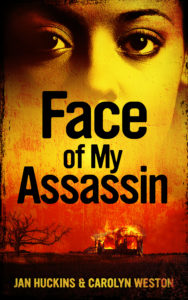 I’m really excited about the release today of FACE OF MY ASSASSIN, a powerful crime novel in the tradition of IN THE HEAT OF THE NIGHT and TO KILL A MOCKINGBIRD by Carolyn Weston (who wrote the books that were the basis for the hit TV series THE STREETS OF SAN FRANCISCO) & Jan Huckins. It’s a lost literary classic that’s back-in-print for the first time in 60 years… and, unfortunately, it’s as relevant and provocative today as it was then.
I’m really excited about the release today of FACE OF MY ASSASSIN, a powerful crime novel in the tradition of IN THE HEAT OF THE NIGHT and TO KILL A MOCKINGBIRD by Carolyn Weston (who wrote the books that were the basis for the hit TV series THE STREETS OF SAN FRANCISCO) & Jan Huckins. It’s a lost literary classic that’s back-in-print for the first time in 60 years… and, unfortunately, it’s as relevant and provocative today as it was then.


